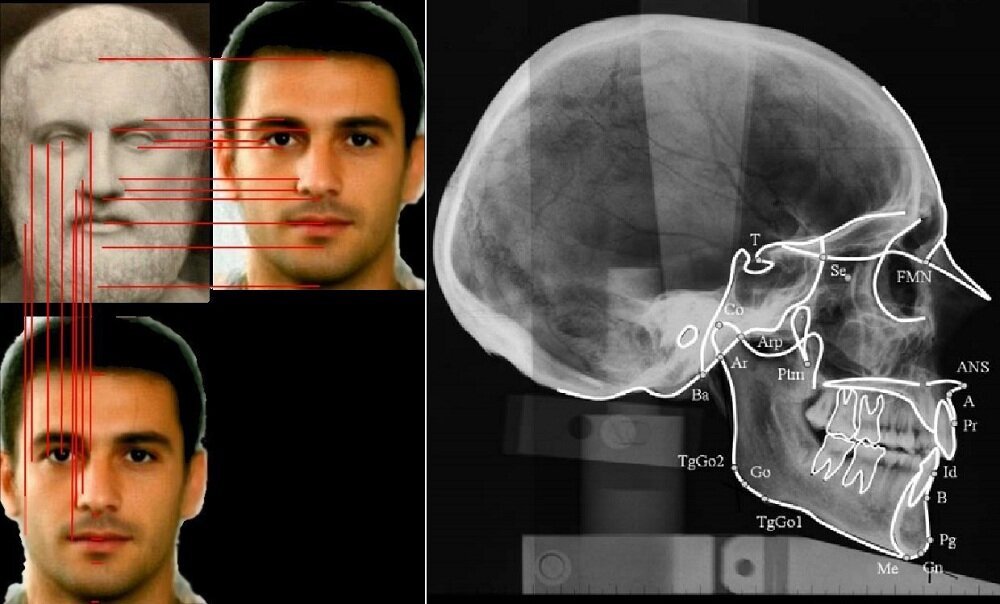How has the craniofacial structure of Greeks evolved over the last 4,000 years? From ancient times to the present day, what changes in human anatomy can reveal about the rich history and culture of Greece?
The study of craniofacial morphology offers crucial insights into the biological and cultural continuity of populations. In Greece, a region with profound historical and cultural significance, examining the craniofacial features of ancient and modern inhabitants provides an opportunity to investigate long-term patterns of human variation. This article delves into the findings of Manolis J. Papagrigorakis, Antonis A. Kousoulis, and Philippos N. Synodinos, who analyzed the craniofacial configurations of ancient (2000–500 BC) and modern Greek skulls, revealing fascinating patterns of morphological adaptation and continuity over 4,000 years.
Materials and Methods The study examined 141 ancient Greek skulls and 240 modern Greek skulls, representing the largest dataset in national studies of this nature. The skulls were categorized by age, sex, era, and geographical origin. Lateral cephalograms were obtained to measure 53 craniofacial variables. Statistical analyses, including one-way ANOVA and correlation matrix assessments, were employed to compare the measurements across groups.
Key morphological features were analyzed using geometric morphometric techniques, focusing on two principal shapes: the cranial polygon and the basic quadrilateral. These structures were chosen due to their anatomical significance in defining craniofacial morphology.
Findings
Morphological Patterns Across Eras The study observed that most craniofacial measurements followed similar patterns in ancient and modern Greek populations. For example, both groups exhibited proportional relationships between cranial and facial dimensions, reflecting consistent biological foundations.
Clockwise Morphological Shift When sketching and comparing the outline of skulls, a subtle clockwise movement was noted in the configuration of the upper face. This shift suggests an adaptive response to changing environmental or genetic factors over millennia. Despite these adjustments, many traits remained stable, supporting the hypothesis of biological continuity.
Sex-Specific Variations The comparison of male and female skulls revealed differences in craniofacial dimensions. These differences were consistent across ancient and modern samples, underscoring the influence of sexual dimorphism in craniofacial morphology.
Geographical and Temporal Influences Skulls from different regions of Greece showed slight morphological variations, likely reflecting local environmental pressures and genetic drift. Temporal comparisons highlighted a gradual transition in certain features, such as cranial breadth and facial height, which may correlate with broader historical phenomena, including population movements and cultural exchanges.
Discussion The results of this study suggest that the craniofacial morphology of Greeks has been shaped by a combination of genetic and environmental factors. Despite the inevitable influence of multicultural interactions, the data indicate a remarkable degree of continuity within the Greek population. The stability of key craniofacial traits points to an enduring genetic legacy, while the observed morphological adjustments reflect the population’s ability to adapt to changing conditions.
The clockwise movement observed in the craniofacial outline could be attributed to evolutionary pressures such as dietary shifts or climatic adaptations. For instance, changes in masticatory function due to agricultural advancements might have influenced jaw dimensions and facial structure.
Conclusion The craniofacial morphology of Greeks, as analyzed over 4,000 years, provides valuable evidence of both biological continuity and adaptive change. While some traits remained stable, preserving the ethnic identity of the population, others underwent logical modifications in response to environmental and genetic factors. This research serves as a robust atlas of craniofacial data, offering insights into the interplay between genetics, environment, and cultural evolution. It underscores the resilience of Greek identity amidst the dynamics of history and migration, while also highlighting the nuanced changes that characterize human adaptation.
Implications for Future Research Further studies could expand on these findings by integrating advanced imaging technologies and genomic data. Investigating the relationship between craniofacial morphology and genetic markers could yield deeper insights into the historical movements and interactions that have shaped the Greek population. Additionally, exploring the impact of sociocultural factors on craniofacial development may enhance our understanding of human adaptability.
Acknowledgments The authors express gratitude to the Department of Paleopathology at the University of Athens for providing access to the skull collections and facilitating the research.
References Papagrigorakis, M. J., Kousoulis, A. A., & Synodinos, P. N. (Year). Craniofacial morphology in ancient and modern Greeks through 4,000 years. Journal of Anthropological Studies, Volume(Issue), Pages.









